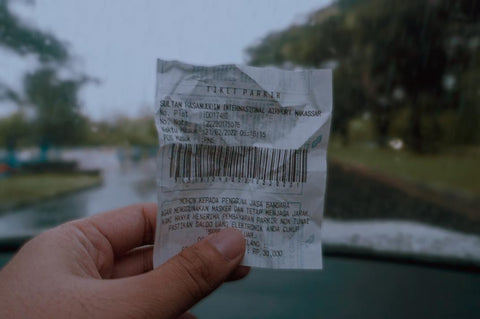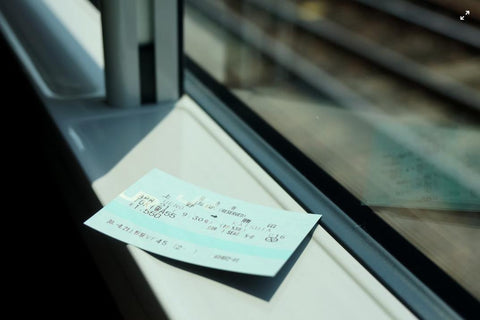With the rise of thermal printing as a favored choice for businesses and individuals, its benefits, such as inkless, convenience, and cost-effectiveness. However, many people often encounter a common issue: thermal receipt paper faded over time. This phenomenon stems from the unique properties of thermal paper, where external factors like light exposure, friction, and oxidation trigger reactions in its composition, hastening the deterioration of text and images.
For business owners relying on thermal printers for different kinds of receipts, preserving the longevity of thermal paper becomes paramount. Thus, the question arises: How to deal with fading text on your receipts? This article delves into the causes behind thermal paper fading and provides practical solutions for its preservation.

What Is Receipt Paper?
Receipt paper is a specialized type of paper commonly used for printing receipts, invoices, and tickets. Unlike regular paper, thermal paper operates by having a layer of heat-sensitive chemicals coated onto its surface. When exposed to heat, these chemicals react, resulting in the formation of text or images. This distinctive feature sets thermal paper apart from standard paper and enables efficient printing without the need for ink ribbons or toner cartridges.
To differentiate between normal paper and thermal paper, one can conduct a simple test. Applying moderate heat, such as rubbing a coin or fingernail vigorously against the surface, should produce a visible mark on thermal paper due to the heat-sensitive coating. Normal paper, lacking this coating, will not exhibit any noticeable change under similar conditions.

Reasons for Faded Receipt Paper
Several factors contribute to the fading of thermal receipt paper over time:
Exposure to Light: Prolonged exposure to ultraviolet (UV) light, whether from natural sunlight or artificial sources, can accelerate the chemical reaction within the paper, leading to fading.
Heat Exposure: Excessive heat, such as that from direct sunlight or contact with heated surfaces, can trigger premature discoloration and fading of the thermal print.
Storage Conditions: Improper storage in humid or fluctuating environments can degrade the thermal coating, compromising its effectiveness and resulting in faded prints.
Contact with Chemicals: Exposure to certain chemicals, such as those found in cleaning agents or hand creams, can interfere with the thermal coating, causing it to degrade and fade over time.
How to Recover Faded Receipts?
Digital Restoration: If the receipt hasn't undergone significant discoloration (e.g., turning black, yellow, or brown), opt for digital restoration. Capture a colored scan of the receipt and utilize image-editing software like Adobe Photoshop to adjust settings, potentially creating a negative image for improved clarity.
Heat Exposure: Experiment with exposing the faded receipt to mild heat, such as utilizing a hairdryer on a low setting or placing it in a warm environment. Heat application may temporarily darken the faded text, rendering it more readable.
Professional Assistance: For invaluable or irreplaceable receipts, consider engaging a professional document restoration service. These experts possess specialized techniques and equipment tailored to effectively restore faded text, ensuring the preservation of vital information.

How to Store Receipt Paper?
To mitigate the risk of thermal receipt paper fading, it's essential to adhere to proper storage practices:
Avoid Direct Sunlight: Store receipt paper away from direct sunlight and UV sources to minimize exposure to light-induced fading.
Control Temperature and Humidity: Maintain a stable environment with moderate temperature and humidity levels to prevent premature degradation of the thermal coating.
Use Protective Containers: Store receipt rolls in protective containers or drawers to shield them from environmental factors and potential damage.
Keep Away from Chemicals: Store receipt paper away from areas prone to chemical exposure, such as cleaning supplies or industrial chemicals, to prevent interference with the thermal coating.
Digital Backup: Consider digitizing receipts using a mobile app to create a digital backup, reducing reliance on physical copies and preserving their content indefinitely.

Choose High-quality Thermal Receipt Paper
When purchasing thermal receipt paper, prioritize quality to ensure long-lasting legibility and performance. Consider the following factors:
Thickness and Durability: Opt for thermal paper of appropriate thickness and durability to withstand handling and environmental conditions without compromising print quality.
Chemical Composition: Choose thermal paper formulated with high-quality heat-sensitive chemicals that resist fading and provide clear, long-lasting prints.
Manufacturer Reputation: Select thermal paper from reputable manufacturer known for their commitment to quality and reliability in thermal printing applications.

Summary
In conclusion, the fading of thermal receipt paper can be attributed to various factors such as exposure to light, heat, improper storage, and chemical interactions. By understanding these factors and implementing proper storage practices, individuals and businesses can prolong the legibility and lifespan of their receipts. Additionally, selecting high-quality thermal paper from trusted manufacturers can further enhance print durability and clarity. With these insights and proactive measures, you can restore and maintain the crispness of your thermal receipts, ensuring accurate documentation of transactions for years to come.











